
The cost to paint the interior of a house in Portland, OR depends on size, layout, type of surface, and more. Learn what factors can influence your total in this guide.
Create a focal point in any room


Want to update your house and show off your personal style, all without a lot of effort? Create an accent wall featuring your favorite colors and patterns. Need some inspiration? Here are some of the different ways you can add an accent wall to almost any room in your home.
An accent wall is any wall within a room that has a different color, design, material, or pattern than other walls in the space. Creating a feature wall adds character and dimension within the space and allows you to show off your unique style without committing to painting or wallpapering the entire room.
Planning a painting project is fairly straightforward. According to Angi data, more than half of homeowners (55%) are looking to complete their specialty painting project within two weeks—a quick turnaround time. Once you know your budget and color, a pro should be able to start the project, as long as they’re available and no wall repairs are needed first.
When choosing the best paint color for your accent wall, there are a few factors to take into consideration. The color you choose can impact the entire feel of the room, so focus on both the features in the room and your personal style preferences.
Remember, darker colors tend to make a room feel smaller, so if your room is on the smaller side, you may still want to consider a lighter hue for your accent wall. To create a cohesive look with the rest of the paint in the room, try using the same hue for your accent wall but two shades darker.
Alternatively, you could choose a bold color like a black accent wall or a green accent wall. This color could be completely different from the rest of the room to create a focal point. Keep these details in mind when choosing an accent wall:
Light sources in the room
Color of the other walls
Furniture style and color
Flooring type and color
Personal style and style of the home
While accent walls are often created using paint, you can also use various materials to add texture and dimension.

Use wood as a material for your accent wall by nailing shiplap planks in a horizontal or vertical pattern to add texture and rustic charm.
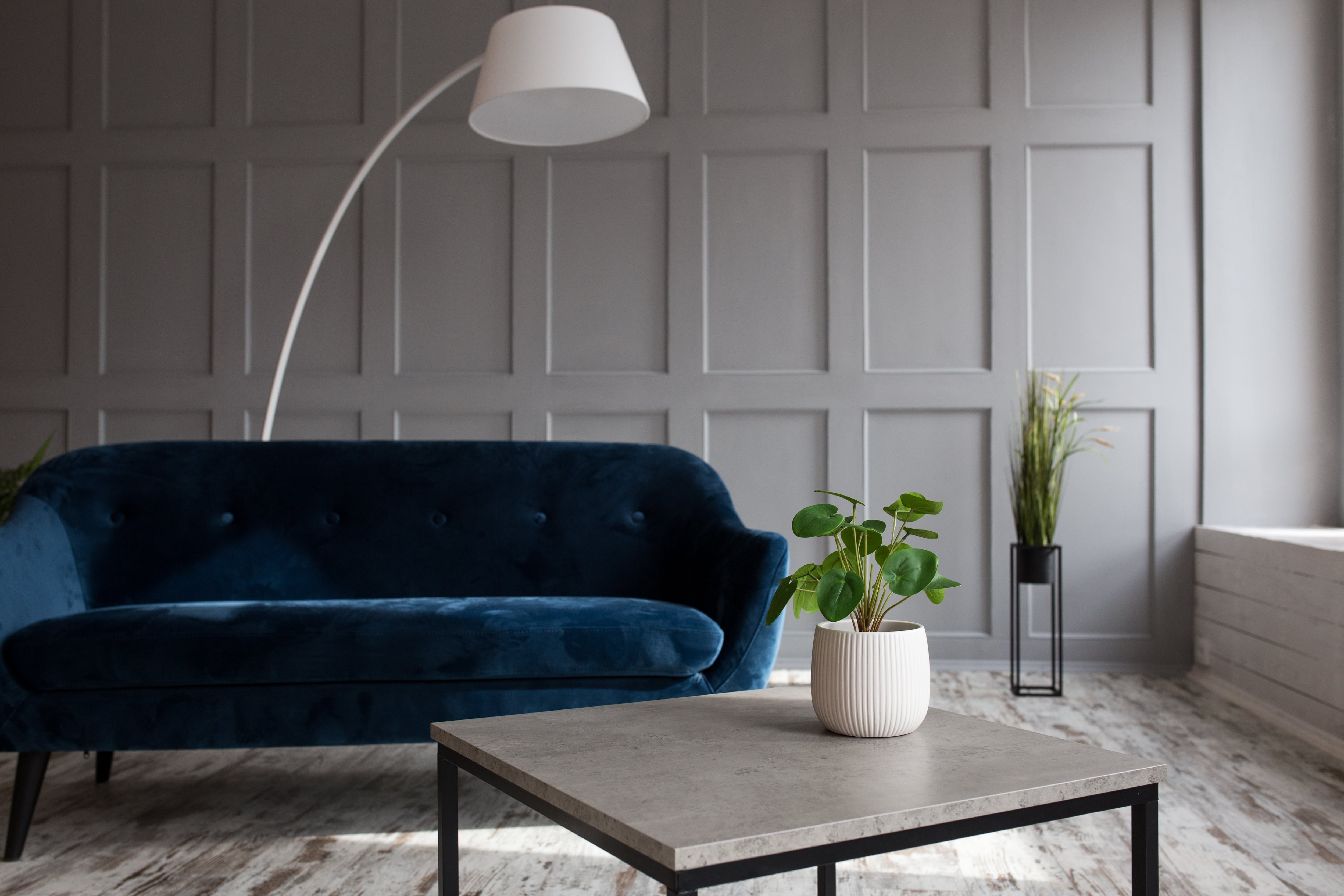
Or, affix wooden boards to the wall (sometimes referred to as board and batten) and create a geometric pattern. Then, paint the wood boards and the wall all the same color for a monochromatic and modern feel.

Using stone for an accent wall brings warmth and texture into a room. Choose light natural stone or marble to brighten up a space. Or, opt for a darker stone or brick accent wall to create a cozy atmosphere.

Wallpaper is another common material used to create an accent wall in a room because you can choose various patterns, colors, or textures. Instead of hanging permanent wallpaper, put up a temporary peel-and-stick covering for a quick update.

When creating your living room design, identify a focal point you’d like to accentuate within your living room, like this textured wallpaper added to the fireplace wall. Use soft yellows and warm tones to accentuate the fireplace, and add contrasting white built-ins for extra storage.
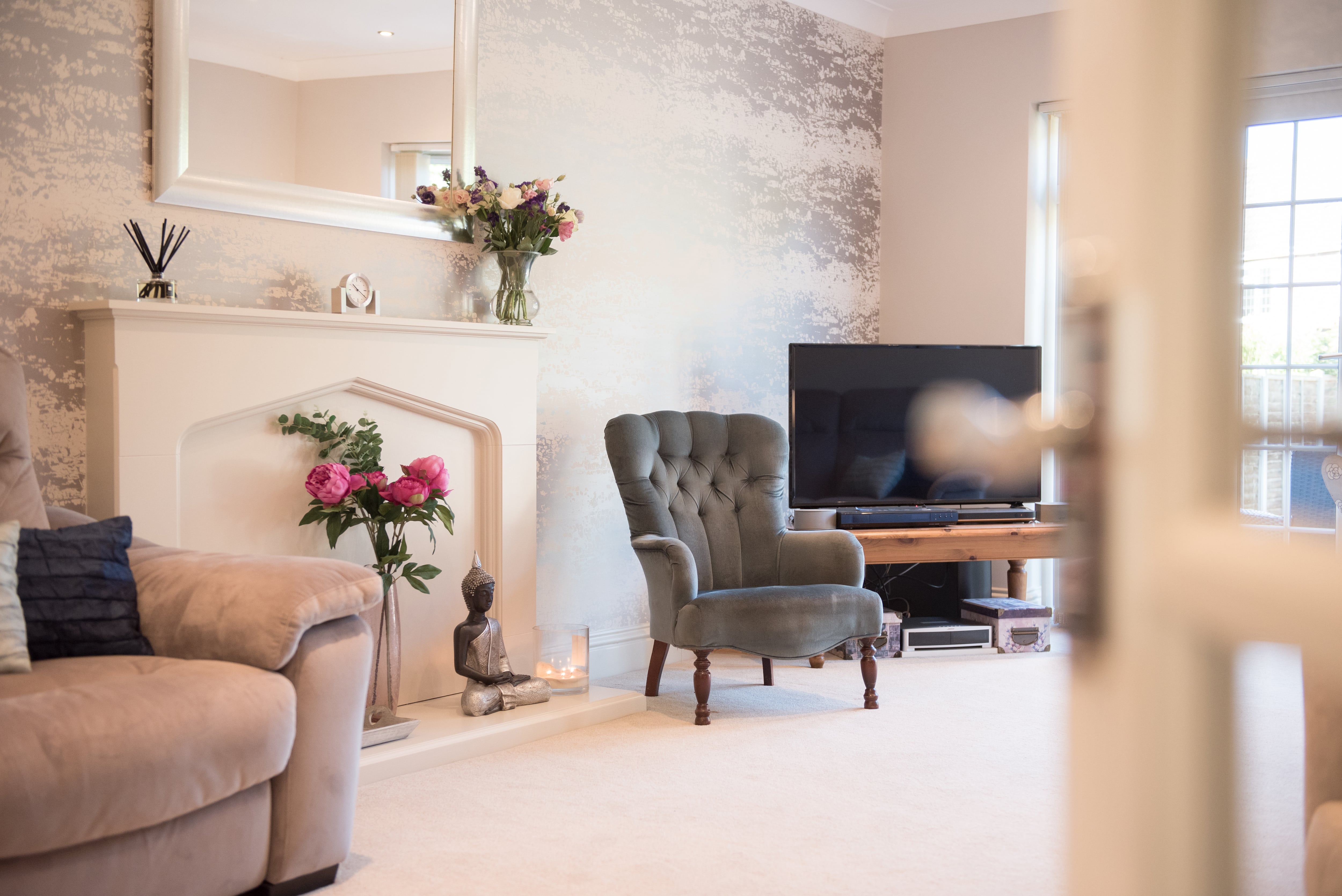
Go bold with a silver metallic wallpaper accent wall to add dimension and an element of glam to the space.

An accent wall is a good way to mix together colors and materials that you like while drawing attention to a designated area. For example, this accent wall adds cozy warmth to a living room via shiplap placed behind the TV.

The dining room brings families together and is a place where memories are made. Use a dark blue accent wall in a dining room with natural light to create an eye-catching focal point in this cherished space.

Create contrast in the dining room with a sophisticated black accent wall surrounded by white walls and warm hardwood floors.

We can’t get enough black accent walls, so here’s another version. This one features a geometric pattern to add even more visual interest to the room. A contemporary mirror, soft gold lights, and a potted plant infuse the room with cheer and help keep things from looking too stark.

Adding an accent wall to a kids’ room can create a playful atmosphere without the need to paint every wall. Paint a themed mural, like this landscape, or use their favorite movie, hobby, or sport for inspiration.
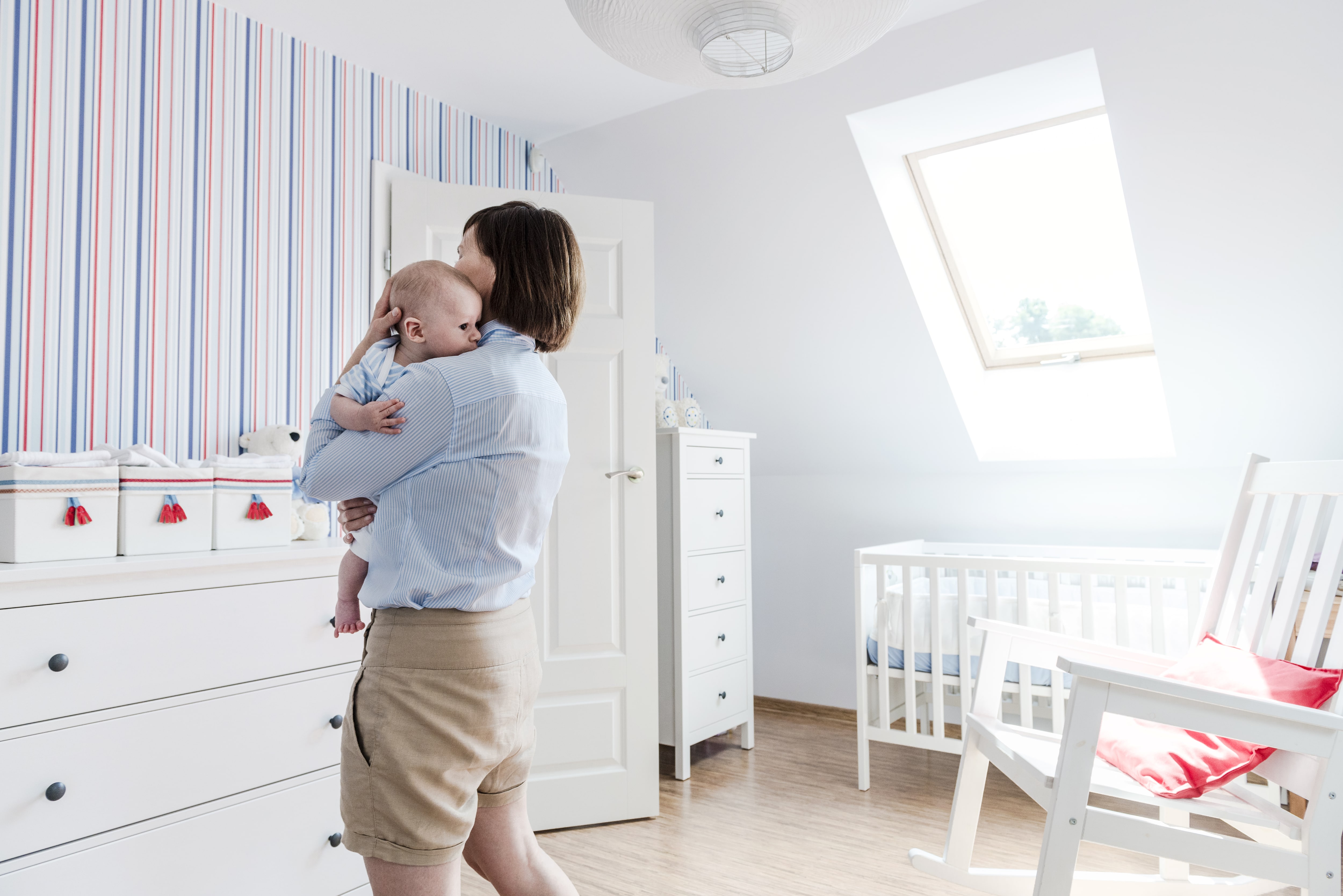
Consider using peel-and-stick wallpaper in a kids’ room so that it’s easily changeable as they grow. Use soft patterns like stripes or polka dots in nurseries combined with simple white accents and furniture.

In a kids’ room, you can make lively color choices or add built-ins to a designated wall to organize toys. Encourage creativity and interactive play within the space by using chalkboard paint, like the accent wall pictured here, or even LEGO base plates.

Even though bathrooms tend to be on the smaller side, creating a shiplap bathroom accent wall can add depth to the space. Attach the shiplap to the wall behind the toilet or sink for a quick weekend project that will make a big impact. Learn how to do a shiplap bathroom properly.
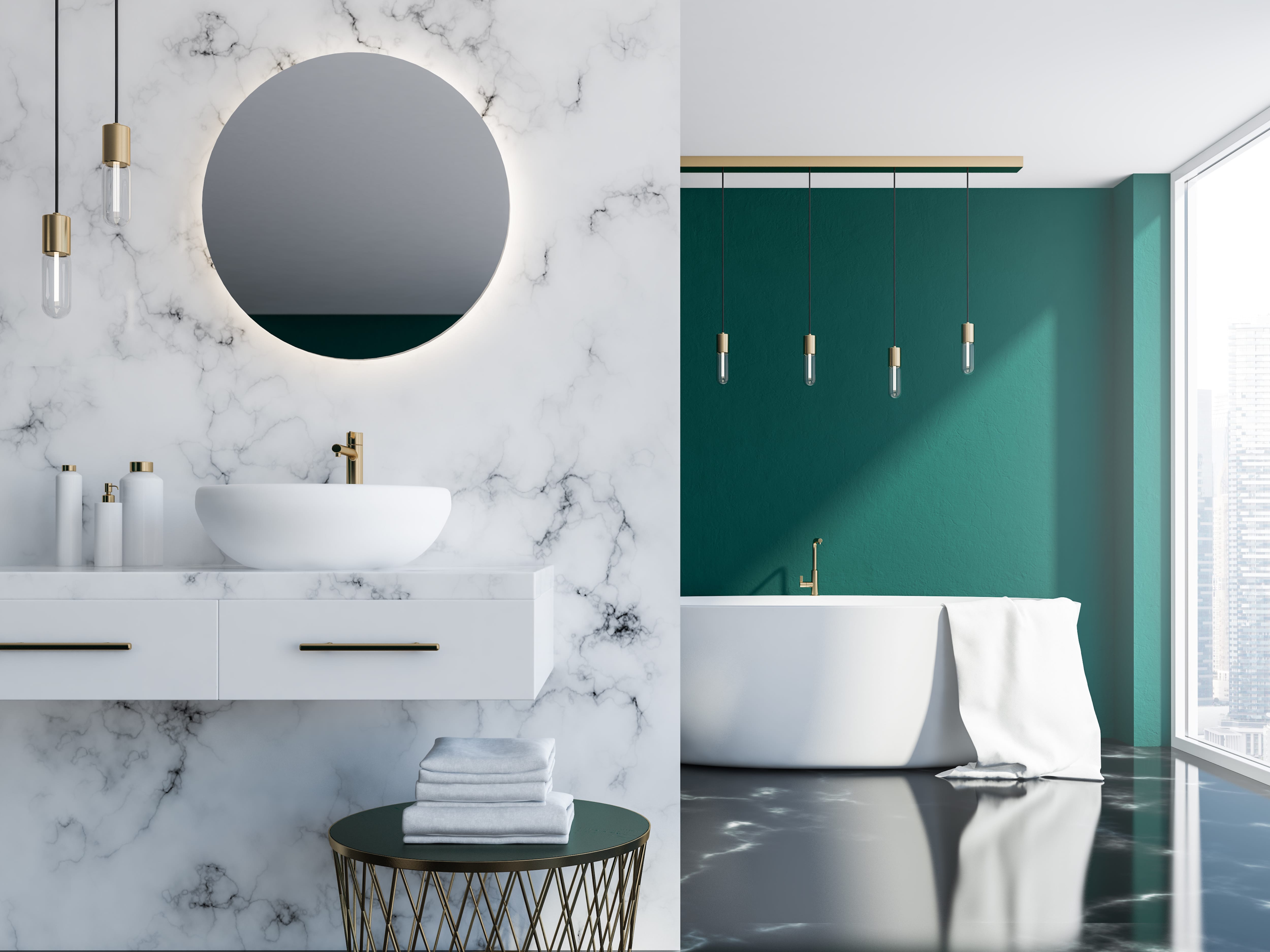
To make a dramatic statement, use a saturated emerald green accent wall behind a freestanding bathtub. Then, contrast the accent wall with elegant marble tile and gold hardware.

You could also use natural stone or tile for your bathroom accent wall. Install the stone or tile all the way up to the ceiling to add texture and give your space a spa-like feel.
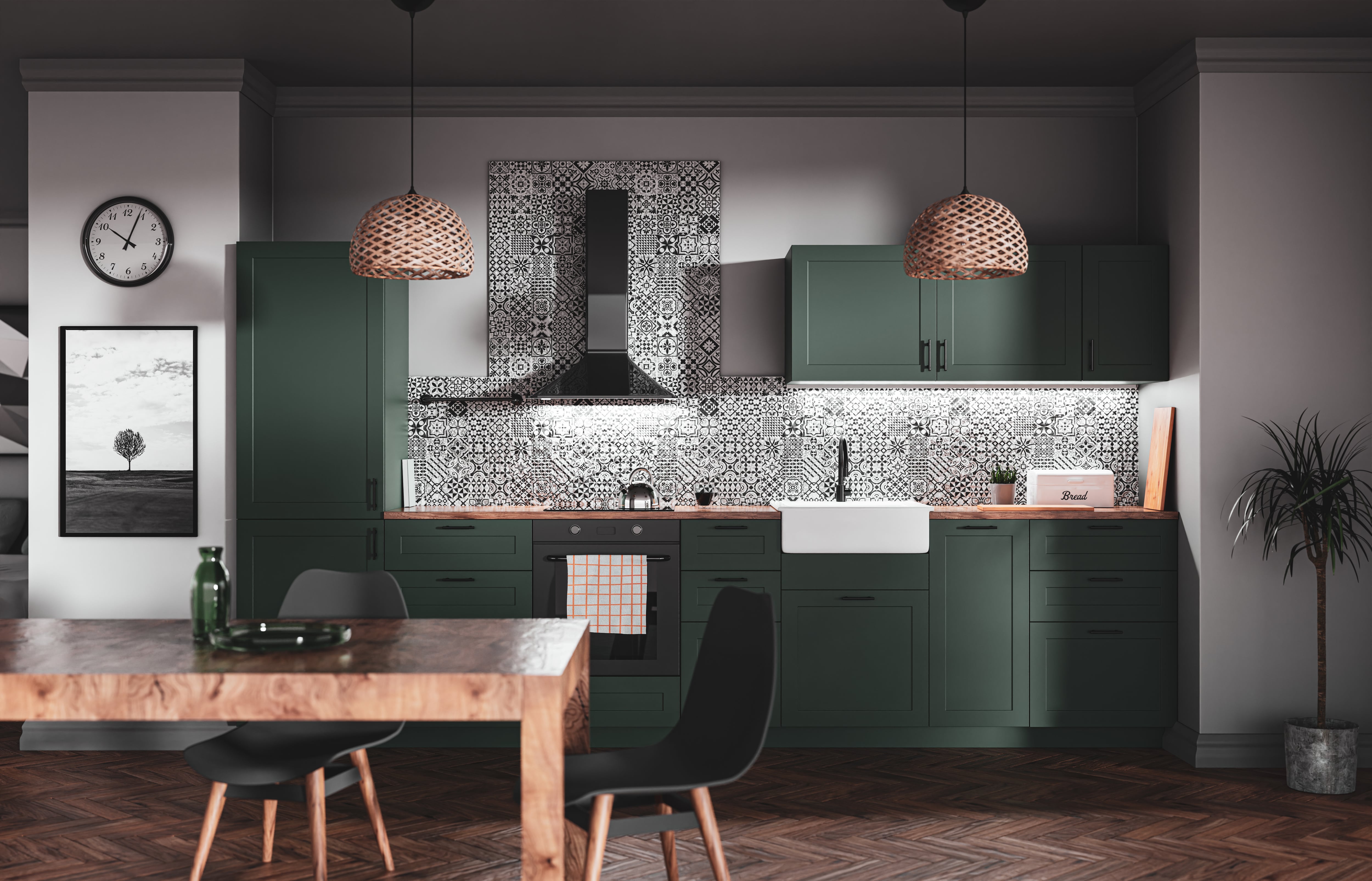
Want a kitchen accent wall, but aren’t entirely sure where it would go? Try your backsplash. We love how this one contrasts forest green cabinets with black and white tiles to create a focal point within the room.
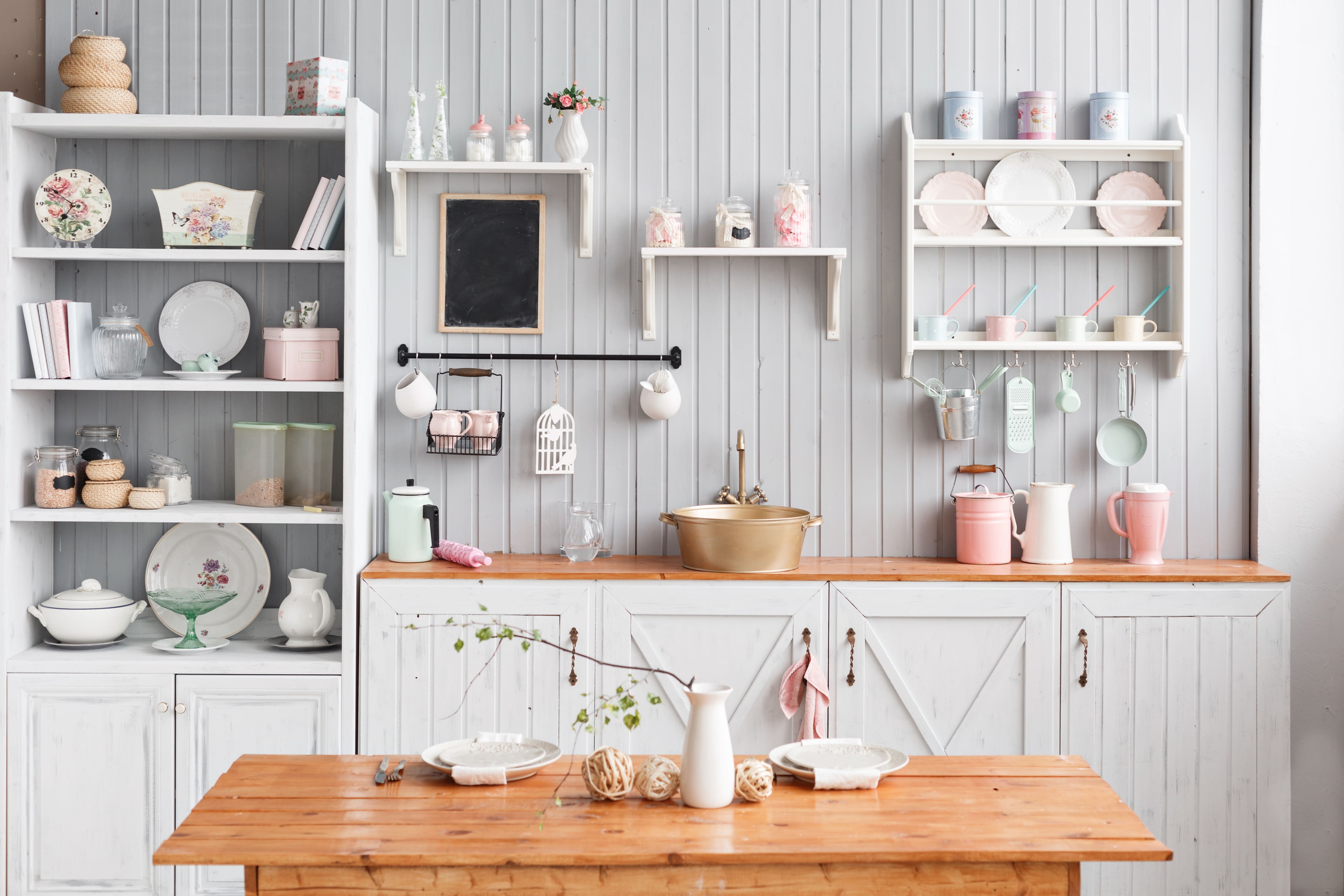
Unsurprisingly, shiplap works well for a kitchen accent wall too. Copy this kitchen and paint vertical shiplap paneling a soft gray, then add open shelving with pastel accents for a quaint-yet-trendy feel.
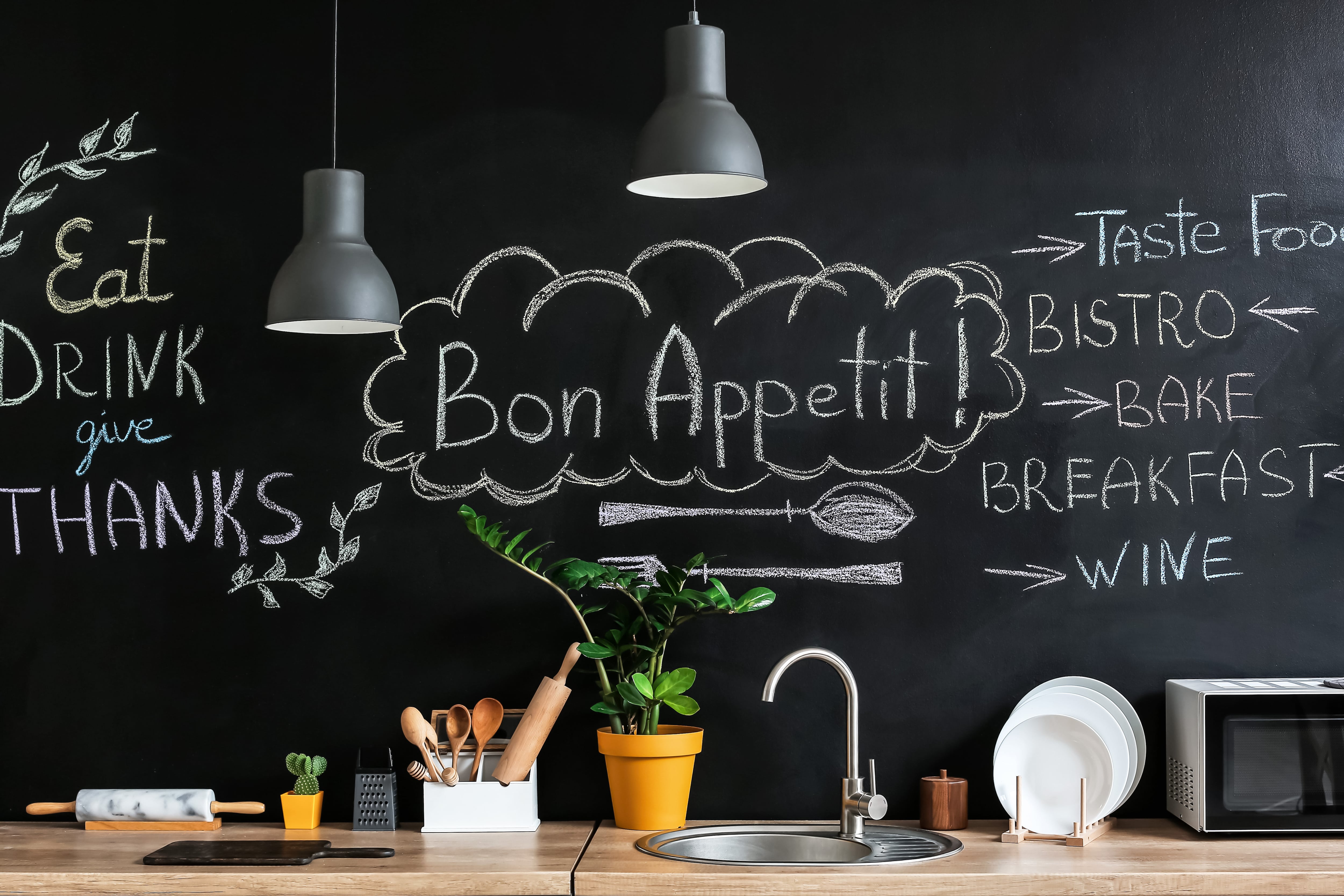
Or, paint a chalkboard accent wall to make grocery lists or write notes to your loved ones throughout the day.
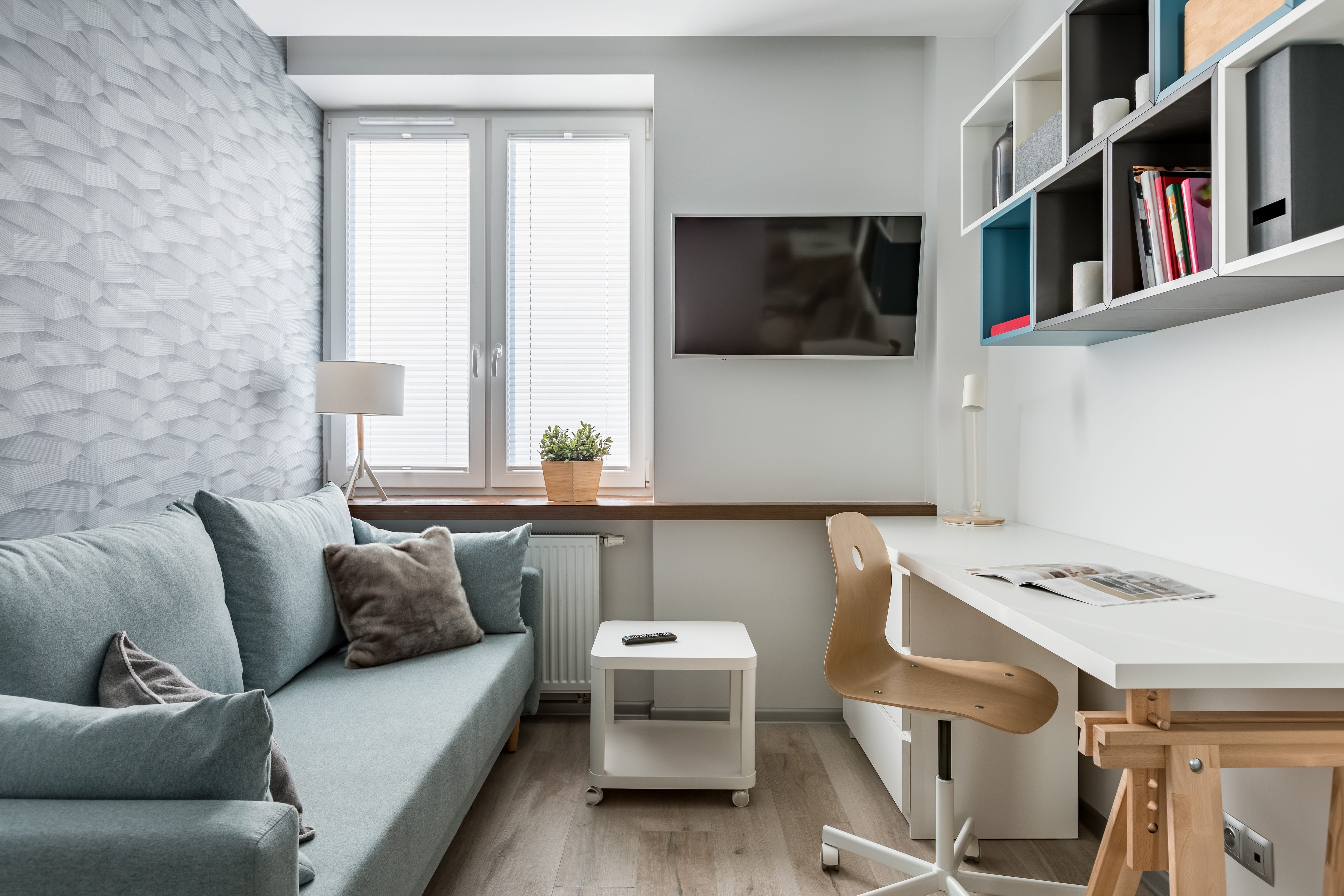
Finding the right color when painting a home office or other small room in your home can be a bit more challenging than when working in a larger space. Use a soft patterned wallpaper for one wall and paint the rest of the walls white to add dimension without overpowering the entire room.

Choose a light, slate blue paint for the main walls in your small room Then, pick a blue a few shades darker to create your accent wall. Use white accents to add brightness and open up the small space.
From average costs to expert advice, get all the answers you need to get your job done.

The cost to paint the interior of a house in Portland, OR depends on size, layout, type of surface, and more. Learn what factors can influence your total in this guide.

The cost to paint the interior of a house in Chicago, IL depends on size, layout, type of surface, and more. Learn what factors can influence your total in this guide.

An accent wall is a great way to elevate any room. Find out how much it costs to paint an accent wall and what factors affect how much you’ll pay.

Is it time to give your home a little makeover? Start with the stairs. Here's how to refinish stair railings and refresh your interior.

Deciding on an overall color scheme for the interior of your house is stressful. Going through the process? Here are the best white wall and trim color combinations.

Looking to refresh your living space but overwhelmed with the color options? Check out these popular paint colors to for some inspiration.